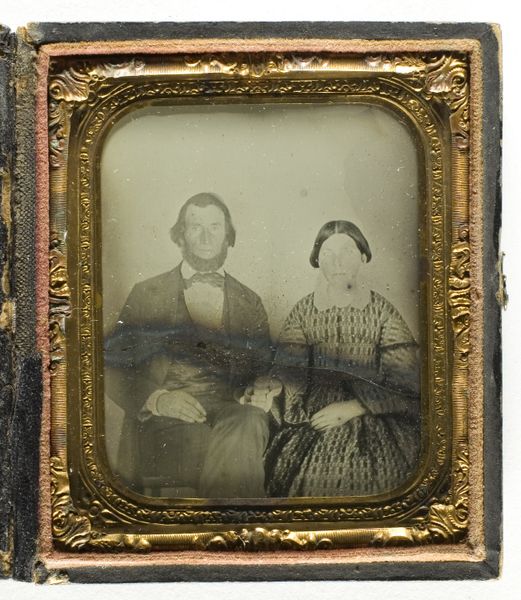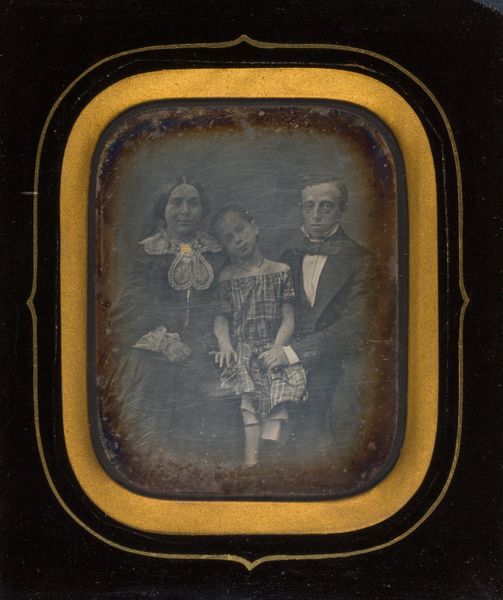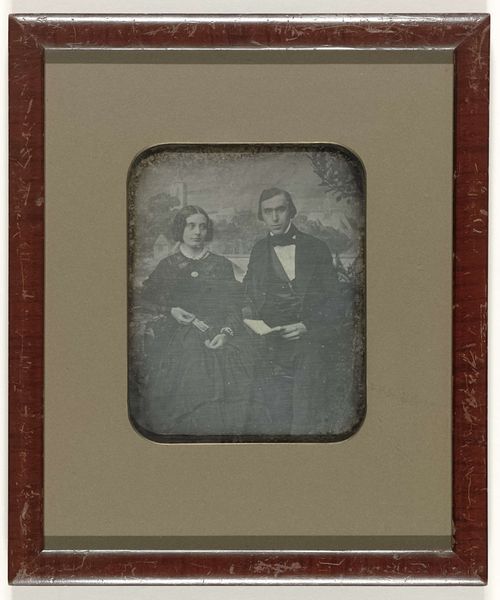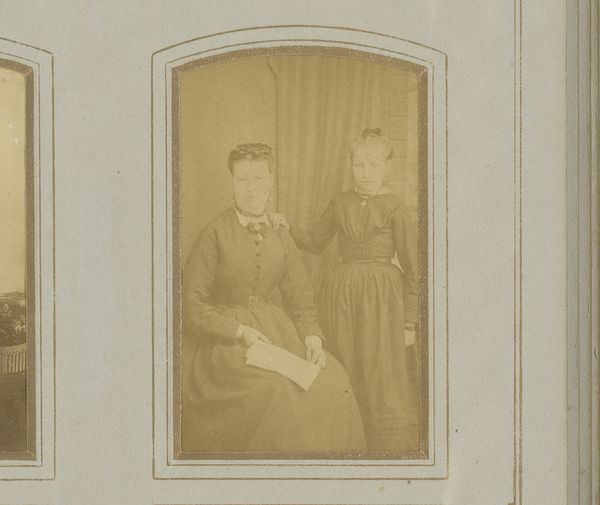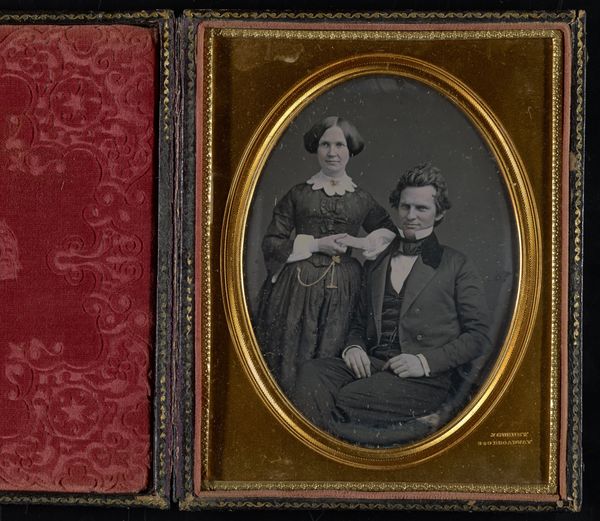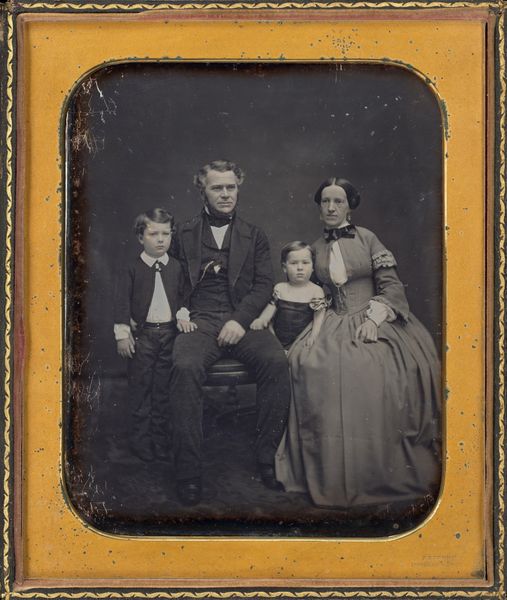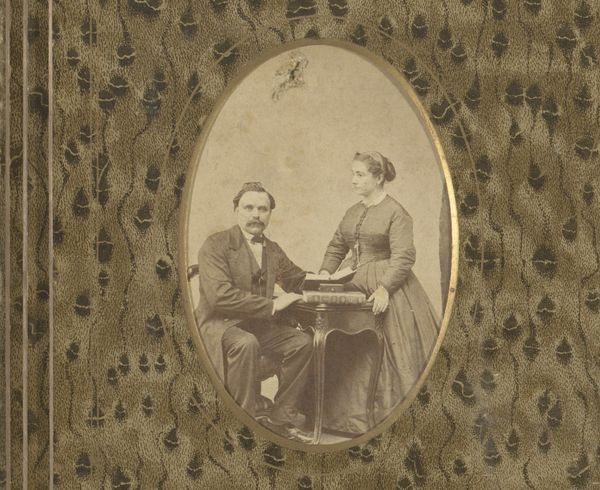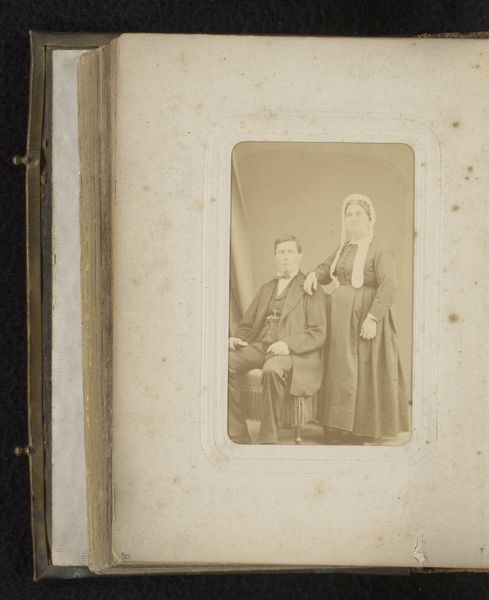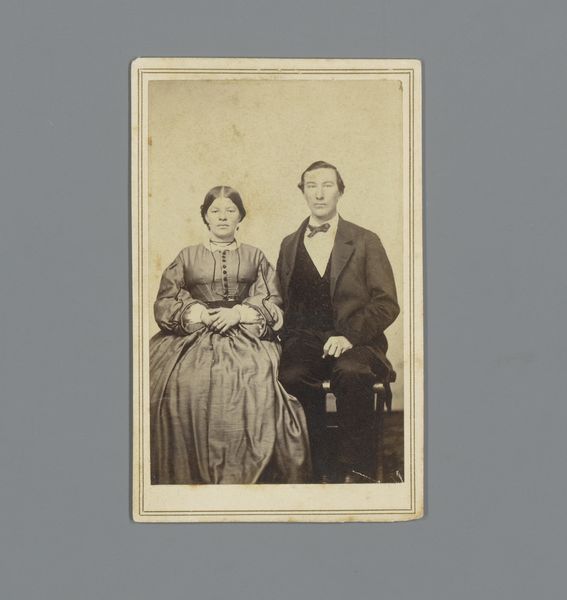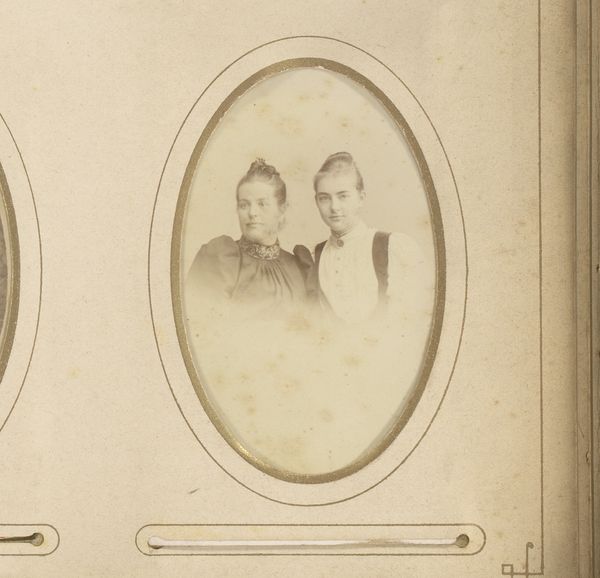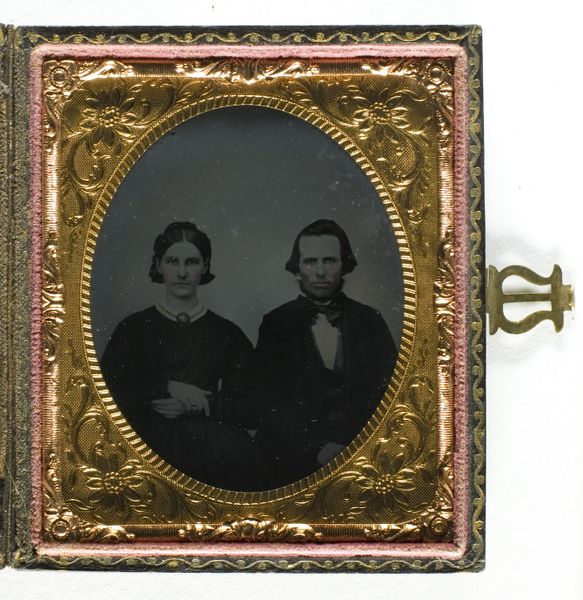
Portret van Olivier Johannes Fransiscus Borghmans en zijn vrouw Magdalena Johanna de Timmerman 1868
0:00
0:00
Dimensions: height 210 mm, width 168 mm
Copyright: Rijks Museum: Open Domain
Curator: Here we have an 1868 daguerreotype entitled "Portret van Olivier Johannes Fransiscus Borghmans en zijn vrouw Magdalena Johanna de Timmerman," which translates to "Portrait of Olivier Johannes Fransiscus Borghmans and his wife Magdalena Johanna de Timmerman." Editor: It has this haunting quality, doesn't it? Like peering into a very specific, contained moment. The monochrome, the slight blur, the formality...it all coalesces into something melancholic. Curator: Daguerreotypes were quite popular for portraiture at this time. Consider the social implications of such a portrait: an assertion of bourgeois identity and aspirations carefully curated for posterity. It speaks to the rising middle class and their desire for representation and legacy. Editor: Yes, the deliberate posing, the clothing-- her elaborate dress with delicate lace cuffs and his more austere but finely tailored coat—they're presenting themselves in a very specific light. But I'm also struck by the stillness and somber expressions. There’s a weight to it. Are we looking at subjects restricted by societal expectations around gender and class, obligated to project an image of solemn dignity? Curator: The act of sitting for a daguerreotype was a laborious process; stillness was necessary. We need to be careful not to impose modern emotional expectations on a mid-19th century photographic practice. We might more accurately view the work within a matrix of photographic development and the societal importance connected with representing familial status in Belgium at that moment. Editor: But can we completely disentangle those technical requirements from the psychological effect? They had to remain still, stoic, and that immobility translates. Think about the power dynamics involved, too – they're wealthy enough to afford this relatively new technology. The whole endeavour is inherently embedded in socioeconomic power and historical fashion of the era. The rigid, framed aspect reminds us it's a controlled narrative. Curator: It’s certainly a confluence of factors. I wonder what their motivations were for creating it, beyond following convention and depicting social position. Editor: Absolutely, it becomes an archive not just of faces, but of desires, societal structures, and the quiet complexities of a marriage from that era. And what price do we assign those values now? Curator: Precisely. The beauty lies in understanding both the intention behind the image and how our perception of it is shaped by our present-day lens. Editor: I agree. This daguerreotype offers a glimpse, however mediated, into a world and a relationship. We can reflect on then and compare with our current world.
Comments
No comments
Be the first to comment and join the conversation on the ultimate creative platform.
